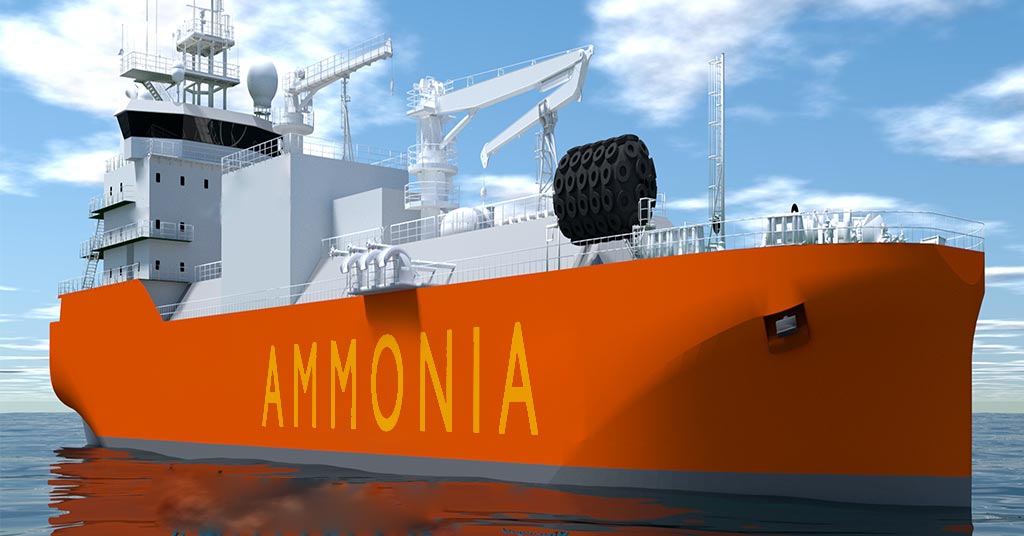Welcome To ChemAnalyst

Asia: Fossil fuels still make up more than 99% of the shipping industry's energy consumption in 2021, contributing to 2% of global energy-related CO2 emissions. To achieve a net zero emissions goal, the industry must introduce low- or zero-Carbon bunker fuels into the mix. Among the viable alternatives, Ammonia stands out as a promising option due to its unique benefits. Particularly in Asia, Ammonia could emerge as a vital compound for fuelling cleaner ships in the future.
The benefits of using Ammonia for shipping are numerous. Not only can it be utilized as a carrier for Hydrogen, but it also boasts a higher energy density than Hydrogen and is simpler to store and transport. Additionally, since it is already a crucial component in global fertilizer production, the infrastructure to transport it is already established.
Ammonia also has potential as a fuel source for internal combustion engines, without producing Carbon Dioxide, Sulphur, or particulate emissions, making it an eco-friendlier option. If produced with renewable energy sources, Green Ammonia has unlimited resources and could be a game-changer in sustainable energy.
However, Ammonia is corrosive and toxic, which requires careful handling. Nitrogen oxides and Nitrous oxides, harmful substances, are present in the exhaust gas from Ammonia -powered engines. Thus, advanced technology is necessary to remove these pollutants, such as Mitsubishi Power's new combustor and selected catalytic reduction system.
Ammonia production is widespread across many countries due to its association with fertilizer production. China holds the top position as the leading producer. In 2022, the annual production capacity of Ammonia touched nearly 240 million tonnes, and there is an estimated 4% average annual growth rate expected between 2022 and 2027. However, the current Ammonia production process is "conventional," which means it heavily relies on Natural gas, emitting Carbon in the process. The industry must adopt cleaner production methods such as Green Ammonia, produced from renewable energy sources, or Blue Ammonia, derived from Natural gas in combination with Carbon capture, utilization, and storage (CCUS) to meet the growing demand for clean fuel.
Blue Ammonia and hybrid Green Ammonia are both important in achieving net zero emissions as they offer a cost-effective pathway towards Green Ammonia production. Hybrid Green Ammonia is produced using both renewable electricity and fossil fuels, while Blue Ammonia is produced using fossil fuels with Carbon capture technology. Both types of Ammonia are crucial components in the transition towards sustainable and eco-friendly Ammonia production.
The global bunker fuel market is expected to grow annually at a rate of 5.2% by 2030. Singapore, the world's largest bunkering port by sales and a significant hub that connects the east and west trade routes, dominates this market. Any significant adoption of new bunkering fuels, such as Ammonia, in Singapore will have a global impact on shipping. To embrace Ammonia as a promising bunker fuel for the future, several initiatives are underway in Singapore and across Asia.
Singapore has announced its National Hydrogen Strategy, which includes plans to commence Hydrogen pathfinder projects by utilizing Ammonia. To support this initiative, the Energy Market Authority and Maritime and Port Authority of Singapore have requested non-binding Expression of Interest proposals for the construction, ownership, and operation of a low- or zero-carbon Ammonia power generation and bunkering solution on Jurong Island. Mitsubishi Heavy Industries (MHI) is also joining in exploring the potential of Ammonia in Asia, with a memorandum of understanding to develop a 100% Ammonia direct combustion power plant on Jurong Island. The aim of this project is to produce Carbon-neutral electricity and increase Ammonia demand in preparation for Ammonia bunkering.
Mitsubishi Shipbuilding, an MHI group company, has developed a new dual-fuel technology that allows for the gradual integration of Ammonia as a bunker fuel. The company has completed the conceptual design of a large gas carrier powered by LPG that is capable of conversion to run on Ammonia. This innovation provides shipowners with flexibility in fuel options and reduces costs by enabling smaller-scale retrofitting.
Despite the numerous benefits of Ammonia as a potential bunker fuel, there are still existing obstacles that need to be addressed such as safety concerns, costs, and the importance of a sustainable value chain. Nevertheless, Ammonia is increasingly recognized as a promising alternative to fossil fuels in the future of marine vessels.
With Asia's well-established Ammonia terminal network and the growing support from the industry, Ammonia holds great potential to become a sustainable alternative that can help break the long-standing dependence of marine vessels on fossil fuels.
We use cookies to deliver the best possible experience on our website. To learn more, visit our Privacy Policy. By continuing to use this site or by closing this box, you consent to our use of cookies. More info.
